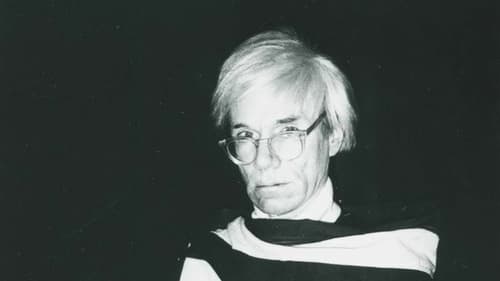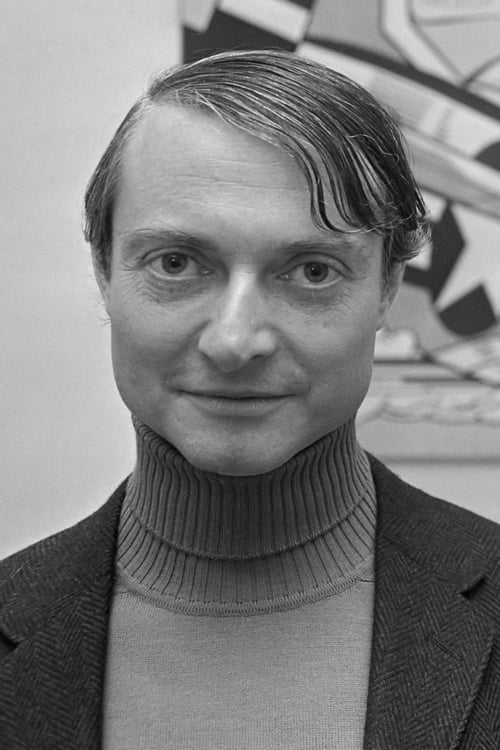Roy Lichtenstein
Рождение : 1923-10-27, Manhattan, New York
Смерть : 1997-09-29
История
Roy Fox Lichtenstein was an American pop artist. During the 1960s, along with Andy Warhol, Jasper Johns, and James Rosenquist among others, he became a leading figure in the new art movement. His work defined the premise of pop art through parody.

Himself (archive footage)
Metropolitan Museum of Art curator Henry Geldzahler reflects on the 1960s pop art scene in New York.

Self (Archive Footage)
Paul Morley investigates the lasting appeal of art's very own Pop Idol. From failed Abstract Expressionist to pioneering Pop Art hero, Roy Lichtenstein revolutionized the art world with his big, bold, brash cartoon images of American culture. Even before Andy Warhol had picked up his can of Campbell's soup, Lichtenstein was making merchandise into art and cultivating his own durable brand, turning out work that was highly consumable and tirelessly reproduced.

Himself
Documentary about U2's album Pop and following tour.

Himself
In this documentary Roy Lichtenstein is interviewed and discusses his life and art work, what influenced him, where his ideas came from, how his art adapted and how and why it changed over time. He discusses the Pop Art movement, a bit, mostly how he was one of a number of artists making art that was then called Pop Art. Also interesting is Lichtenstein tells what different art critics have said about different phases of his art and he shares his personal reactions to their statements. Additionally some footage of people criticizing and discussing his artwork is included, almost in a “he said, she said” manner which makes the viewer think about how sometimes what others say about an artist’s work may be a bit off or just wrong. Contrary to what non-artists may think, artists do usually have a reason or an inspiration behind what they create. Lucky for us this documentary allows us into the brilliant mind of Roy Lichtenstein.

Self
Art in an Age of Mass Culture pulls back the curtain and takes a look at the cultural climate surrounding MoMA's now famed exhibition, "High and Low: High Art and Popular Culture". Opening in the fall of 1990, the show placed a spotlight on the rapid merging of consumerism and the artistic avant-garde. Curated by Kirk Varnedoe and Adam Gopnik and featuring work from artists such as Jeff Koons and Roy Lichtenstein, "High and Low" ignites conversations of mass culture and our society's ever-changing relationship with the arts.

Self
Documentary portrait of Andy Warhol.

Himself
An assessment of the 20th century's best known artist and his vast achievements through the insights and speculations of over a dozen participants. Filmed on the 100th anniversary of Picasso's birth at MoMA, Musée Picasso, Walker Art Center, Museu Picasso Barcelona. Featuring Henry Moore, Anthony Caro, David Hockney, Roy Lichtenstein, Robert Rosenblum, Clement Greenberg, Roland Penrose and others.

Self
A definitive eight part series on the rise and fall of the modern art movement presented by critic Robert Hughes.

Self
In conversation with Roy Lichtenstein, critic Lawrence Alloway places Pop Art on a continuum of twentieth-century art that includes collage, Dada, and Purism in referring to signs and objects of contemporary society; Lichtenstein argues for distinctions between himself, Warhol, Oldenburg, and others. In his Long Island studio, Lichtenstein works on an elaborate composition; one of his 4 major paintings on the theme "The Artist's Studio."

Himself
David Bailey, self-taught photographer and one of the prime architects of the Swinging Sixties, broadened his horizons in the early 1970s by making high-profile documentaries for ATV. With his standing among the artistic community, Bailey was given unprecedented access to Pop Art legend Andy Warhol and his followers, in an attempt to penetrate behind the expressionless exterior of a man who was one of the most controversial figures of his generation.

Himself
During this critical decade in American life, artists built on the styles of the 1950s. An explosion of artistic energy produced Pop Art, Minimalism, color-field painting, and hard-edged abstraction. Sculptors and painters on both coasts explored new methods and new subject matter. American Art in the Sixties examines the key figures of that decade including Rauschenberg and Johns, two crucial transitional figures between Abstract Expressionism and the sensibilities of the new decade. The art of that time mirrors the optimism and the affluence, and the technology and the vulgarity of those boom years.

Himself
This is the debut documentary made by Alexis Krasilovsky, author of "Women Behind The Camera" (Praeger, 1997). Shot on 16mm in 1971, the film covers much of the New York avant-garde of the time.

Himself
... with real-life portraits of Jayne Mansfield, Frak O'Hara, Ruth Ford, Ned Rorem, Virgil Thomson, Claes Oldenburg, Roy Lichtenstein, William Burroughs, Andy Warhol, Rudy Gernreich, Jonas Mekas and others.

This program profiles Andy Warhol and Roy Lichtenstein, two of pop art's greatest icons. Back-to-back interviews highlight their differences. The voluble Lichtenstein, interviewed in his studio, discusses his methods and the use of familiar objects in his art. The reticent Warhol baits the interviewer, who attempts to extract concrete statements from the elusive artist. The Warhol segment is supplemented by footage of his band, the Velvet Underground; a clip of one of his short films, "Nancy Worthington Fish"; and brief comments from Edie Sedgwick, one of Warhol's proteges.





